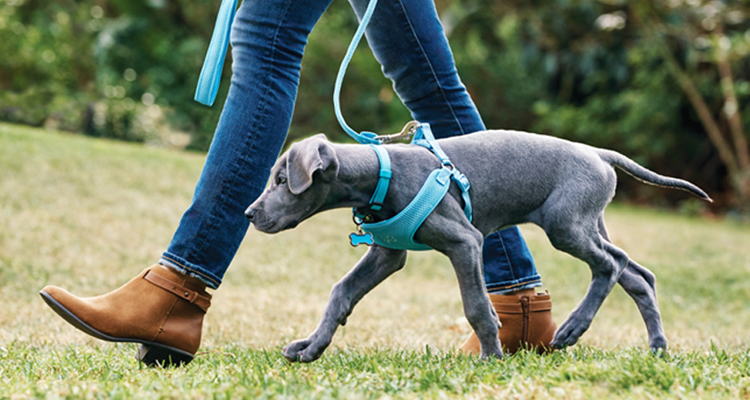Transform Your Dog's Actions With Proven Training Techniques
Changing your pet's actions requires a nuanced understanding of their specific qualities and needs, in addition to the application of proven training techniques. By using favorable reinforcement and acknowledging necessary add their body language, you can efficiently address typical behavioral problems such as excessive barking or jumping. Consistency in your training method not only enhances obedience yet additionally promotes a much deeper bond of trust fund and respect between you and your pet dog. However, the course to successful change might offer unforeseen challenges that warrant more expedition.

Understanding Canine Habits
Comprehending pet habits is necessary for effective training and interaction between human beings and their canine buddies. Pets, as social animals, display a variety of habits affected by genetics, atmosphere, and experiences. Recognizing these behaviors assists proprietors tailor their training approaches to satisfy the details needs of their pet dogs.
Trick aspects of pet dog habits include body movement, vocalizations, and social interactions. For example, a wagging tail commonly shows excitement, while a reduced head may signify submission or worry. Recognizing these signals can aid proprietors interpret their pet dog's mood and react suitably. In addition, socializing plays an essential function in forming habits; pet dogs that connect favorably with numerous individuals and other pets are generally much more well-adjusted and adaptable.
Furthermore, recognizing stress signals-- such as avoidance, pacing, or panting actions-- can avoid escalation right into a lot more major issues. Proprietors who are attuned to their pet's habits can create a secure and nurturing environment, cultivating trust fund and improving the training process. Inevitably, a deep understanding of canine behavior lays the foundation for an unified relationship and efficient training end results, making certain both pets and their owners thrive with each other.
Favorable Reinforcement Strategies
Positive support techniques are widely identified as one of the most reliable methods for training pets, promoting a favorable discovering environment. This approach involves satisfying wanted habits with deals with, praise, or play, consequently encouraging the pet dog to duplicate those habits (Dog training). Unlike punitive techniques, favorable support constructs depend on and strengthens the bond between the pet and the trainer
To implement positive reinforcement properly, timing is important. Incentives must be given quickly following the preferred habits to aid the dog make the link. Uniformity is also vital; making use of the very same commands and benefits aids the dog understand what is expected. Additionally, varying the incentives can keep the pet dog involved. For instance, rotating in between treats, playthings, and verbal praise can maintain rate of interest and motivation.
It is essential to keep in mind that favorable reinforcement is not about bribery; rather, it is about reinforcing good actions. With time, as the pet finds out to link details actions with favorable end results, the frequency of incentives can be progressively minimized, transitioning to verbal appreciation or intermittent rewards. This technique not only urges obedience however also advertises a delighted and confident canine, making training a more delightful experience for both celebrations involved.
Addressing Usual Problems
Addressing usual issues throughout pet training is necessary for making sure a successful and unified connection between the pet and its owner. Several canine proprietors run into behavior challenges, such as extreme barking, leaping, and leash drawing. Understanding the origin causes of these actions is essential for reliable training.
Excessive barking might come from boredom, stress and anxiety, or an absence of socialization. To alleviate this, offer enough exercise, mental excitement, and opportunities for social interaction with both human beings and other dogs. Leaping can typically suggest enjoyment or a wish for interest. Training the pet to sit upon greeting can redirect this habits positively.
Chain drawing is an additional prevalent issue, frequently arising from a dog's enthusiasm to check out. Making use of proper leash handling methods, incorporated with training protocols that encourage loose-leash strolling, can significantly boost this actions.
On top of that, problems like resource protecting or separation anxiousness call for customized methods. Progressive desensitization and counter-conditioning can be efficient in attending to these difficulties. By recognizing and proactively taking care of these usual issues, pet proprietors can promote a more pleasurable training experience and strengthen the bond with their canine friends.
Uniformity in Training
Uniformity is a foundation of effective pet training, as it develops a clear framework for the pet to comprehend habits and expectations. When commands, rewards, and signs are applied evenly, canines can extra easily grasp what is needed of them. Inconsistent training can bring about complication, leading to unfavorable actions that discourage both the pet dog and the trainer.
To attain consistency, it is crucial that all members of the family stick to the very same training approaches. For instance, utilizing the exact same spoken cues and hand signals ensures that the canine obtains uniform messages. In addition, the timing of improvements and rewards ought to correspond; instant support increases the likelihood that the dog will connect the habits with the end result.
Furthermore, establishing a regimen can further improve uniformity. Normal practice, coupled with structured routines for feeding, strolling, and play, assistance pet dogs expect and recognize their setting, making them more receptive to training. Inevitably, uniformity promotes a feeling of protection and trust, encouraging dogs to discover much more successfully. By dedicating to an organized technique, trainers can promote positive actions adjustments and grow a genteel buddy.
Building a Strong Bond
Exactly how can cultivating a strong bond between a pet and its proprietor boost the training experience? When a dog really feels secure in its link with its owner, it is a lot more most likely to exhibit positive actions and be receptive to finding out.

In addition, a reputable link can minimize stress and anxiety and behavior problems, as canines are less likely to act out when they feel recognized and looked after. For that reason, focusing on the development of a solid bond not just improves the training experience however likewise adds to a happier and much more well-adjusted canine. Ultimately, the trip of training changes right into a collective partnership, bring about lasting behavior improvements.
Verdict

Owners that are attuned to their pet's behavior can produce a risk-free and caring environment, promoting count on and improving the training procedure. Inevitably, a deep understanding of canine actions lays the foundation for a harmonious relationship and effective training results, making sure both pets and their proprietors thrive together.
Addressing common problems during pet training is necessary for guaranteeing a unified and effective relationship between the canine and its owner (Dog training).Consistency is a cornerstone of effective canine training, as it establishes a clear structure for the pet to recognize actions and assumptions.In final thought, transforming a canine's habits with shown training techniques requires an understanding of canine behavior, the application of favorable support methods, and a focus on consistency
 Neve Campbell Then & Now!
Neve Campbell Then & Now! Ross Bagley Then & Now!
Ross Bagley Then & Now! Bug Hall Then & Now!
Bug Hall Then & Now! Heath Ledger Then & Now!
Heath Ledger Then & Now! Melissa Sue Anderson Then & Now!
Melissa Sue Anderson Then & Now!